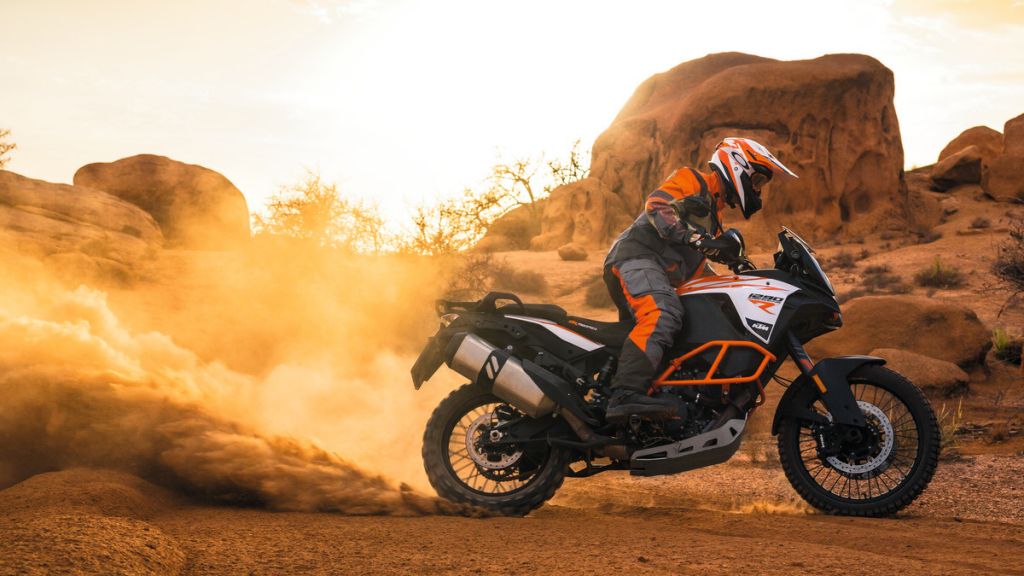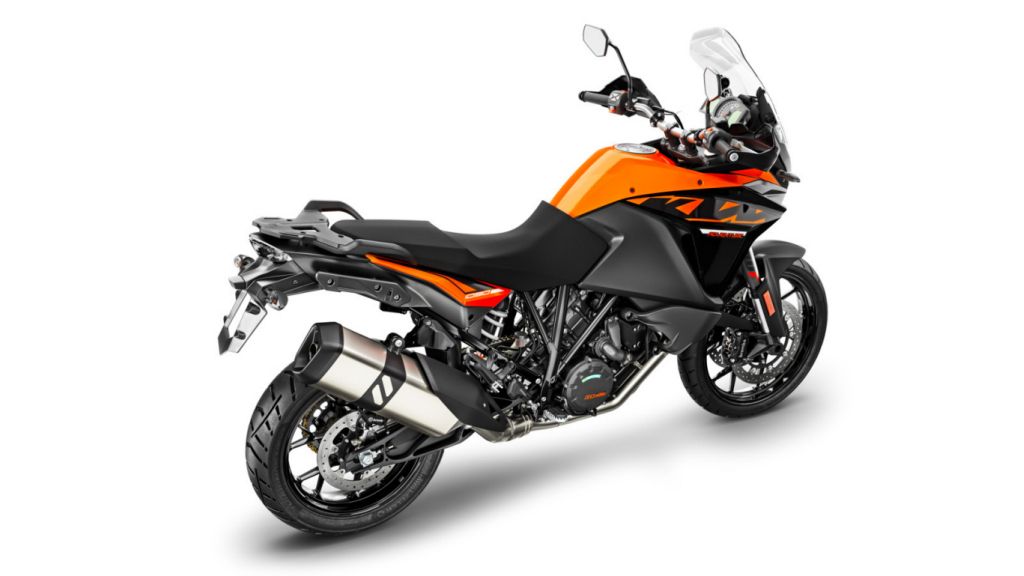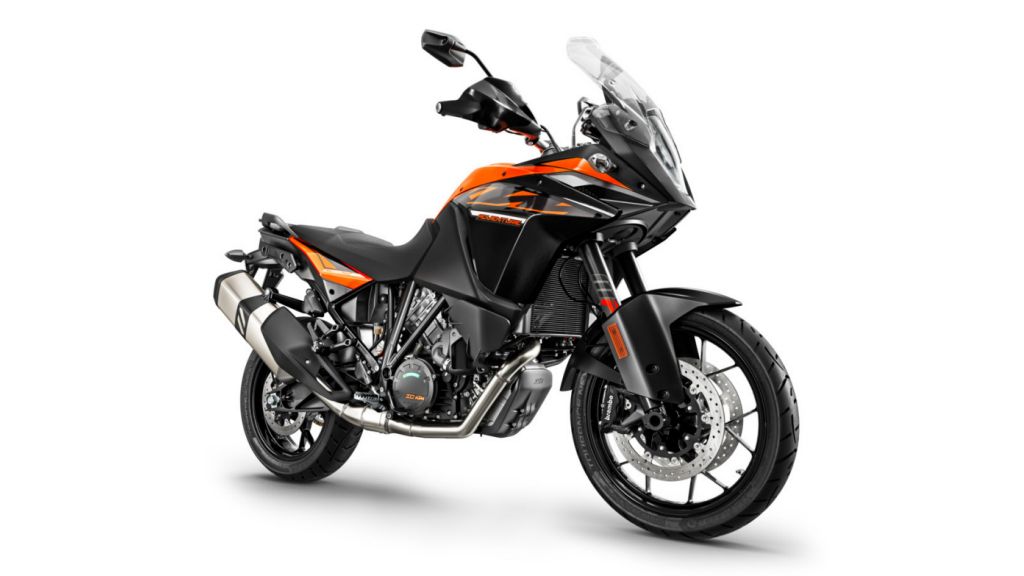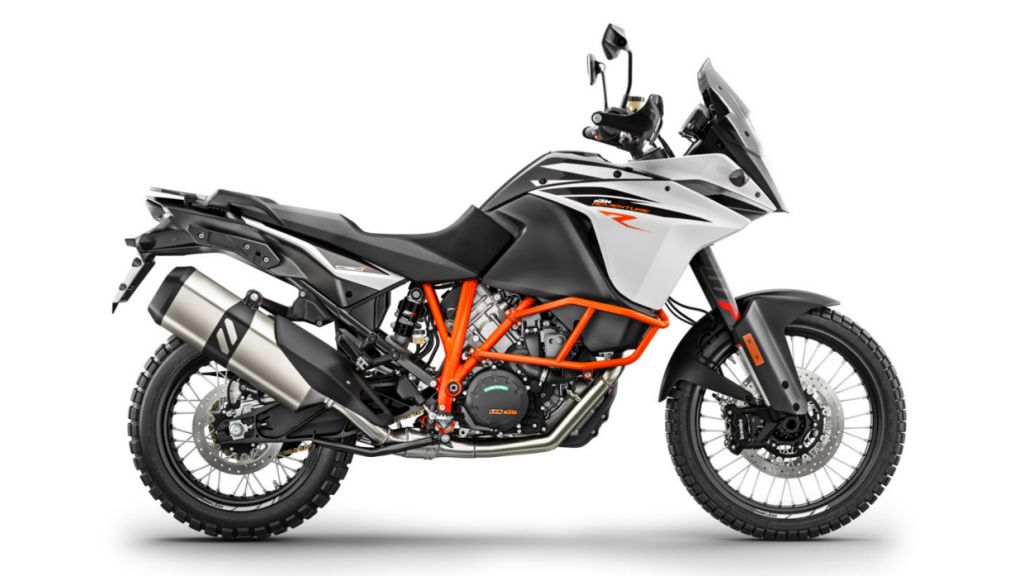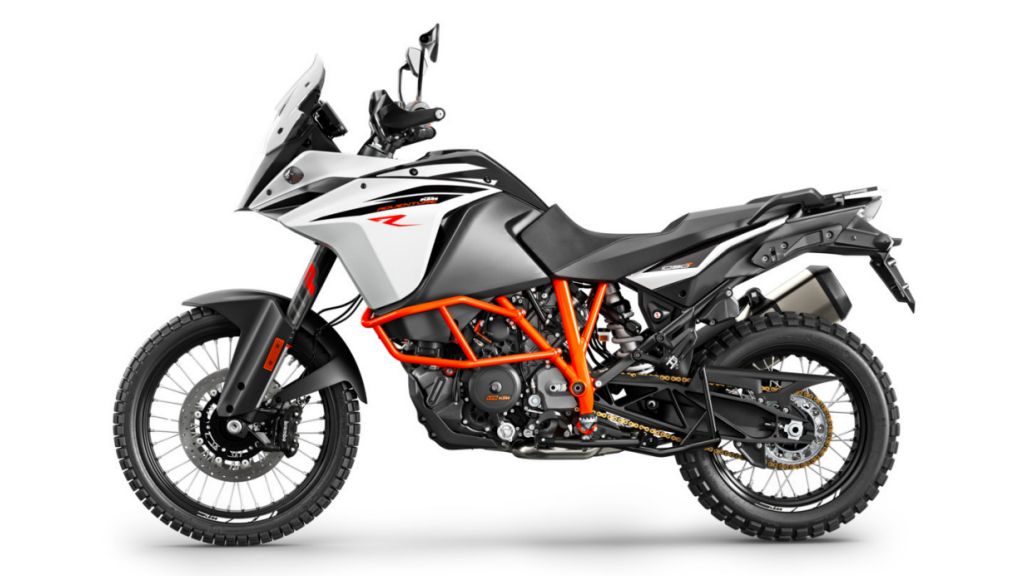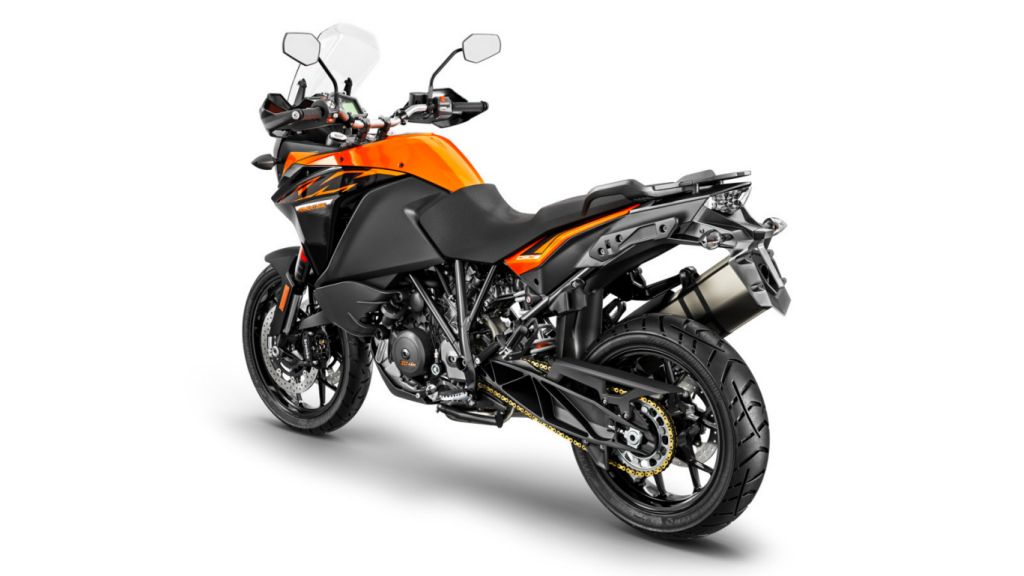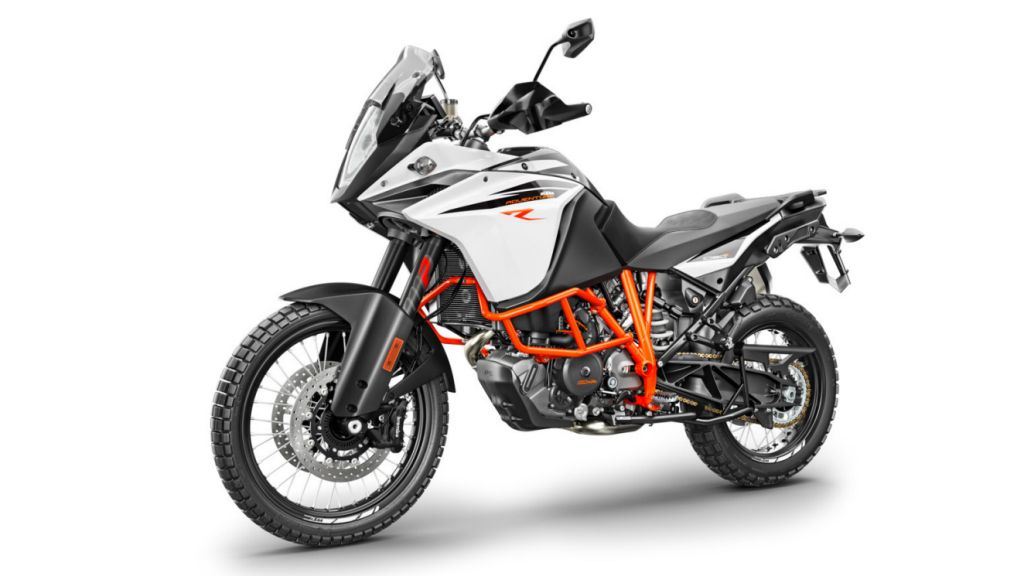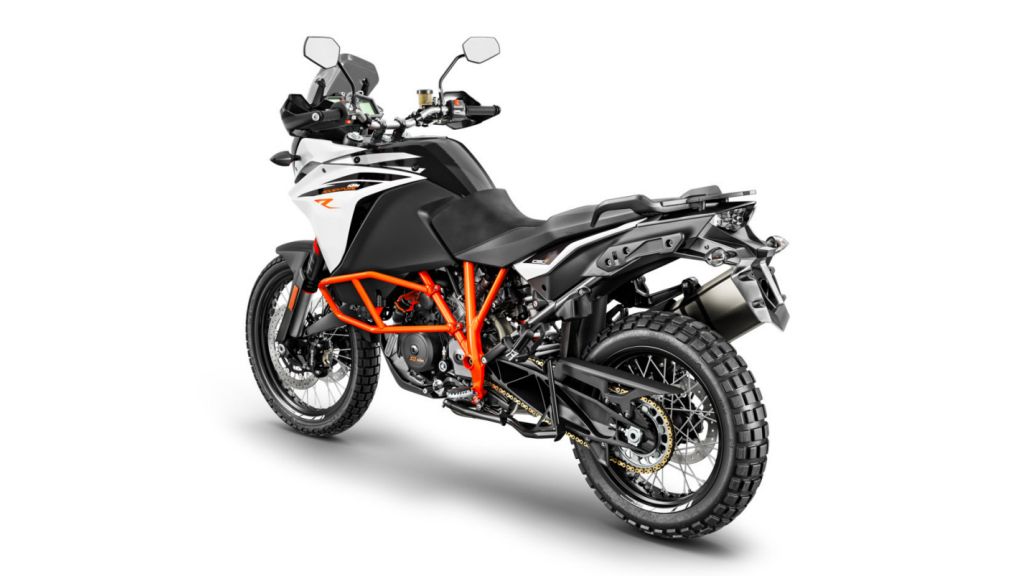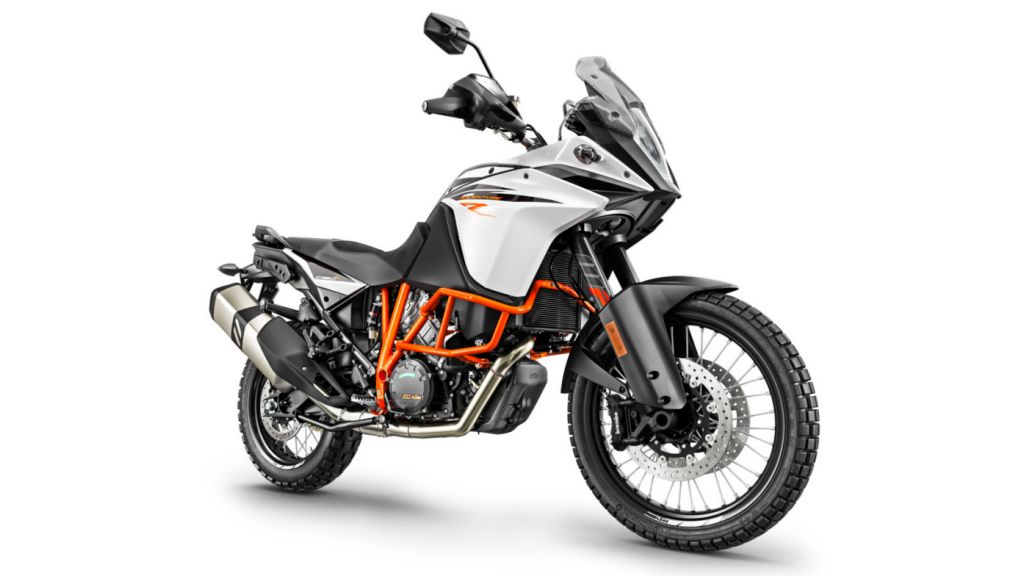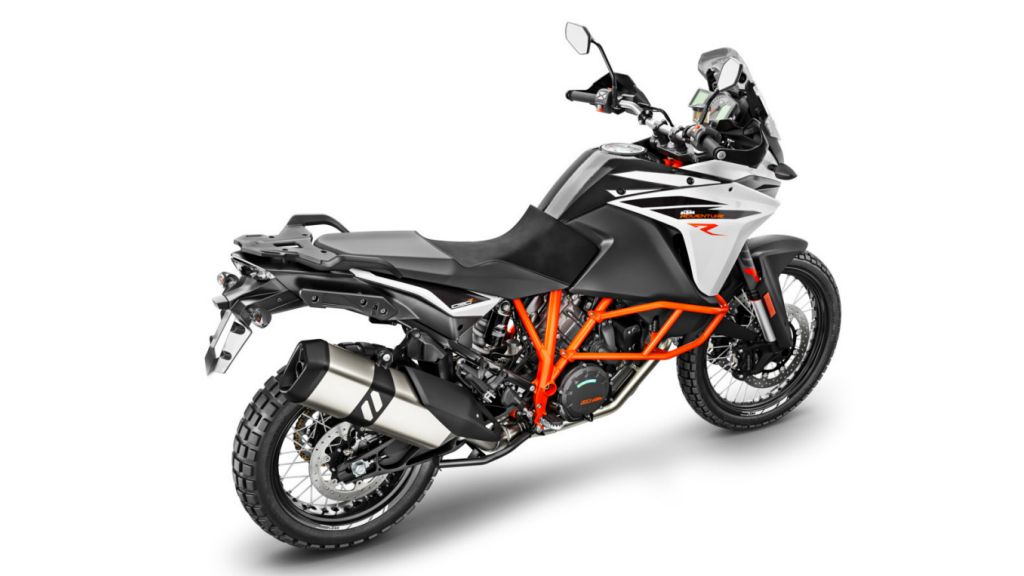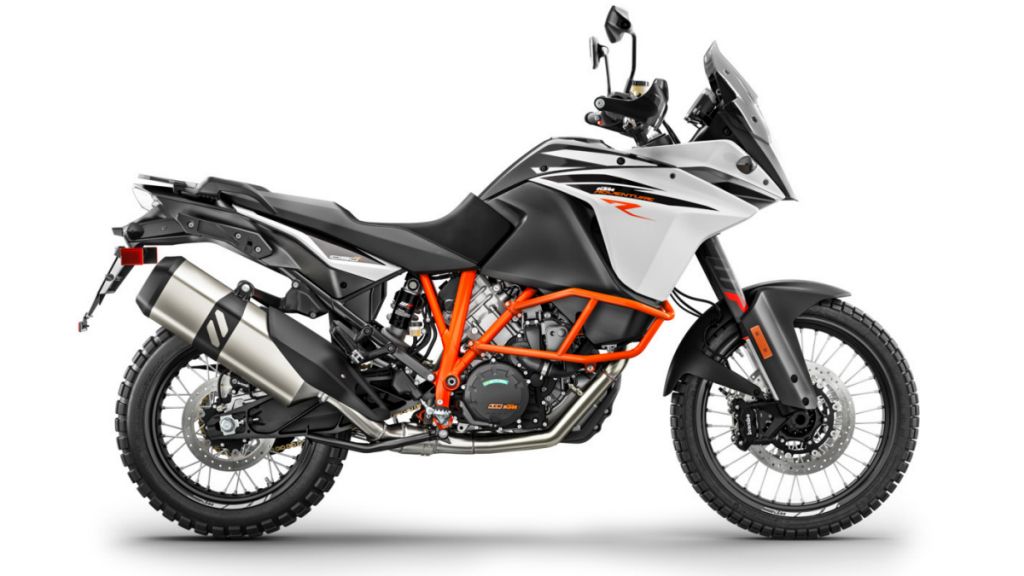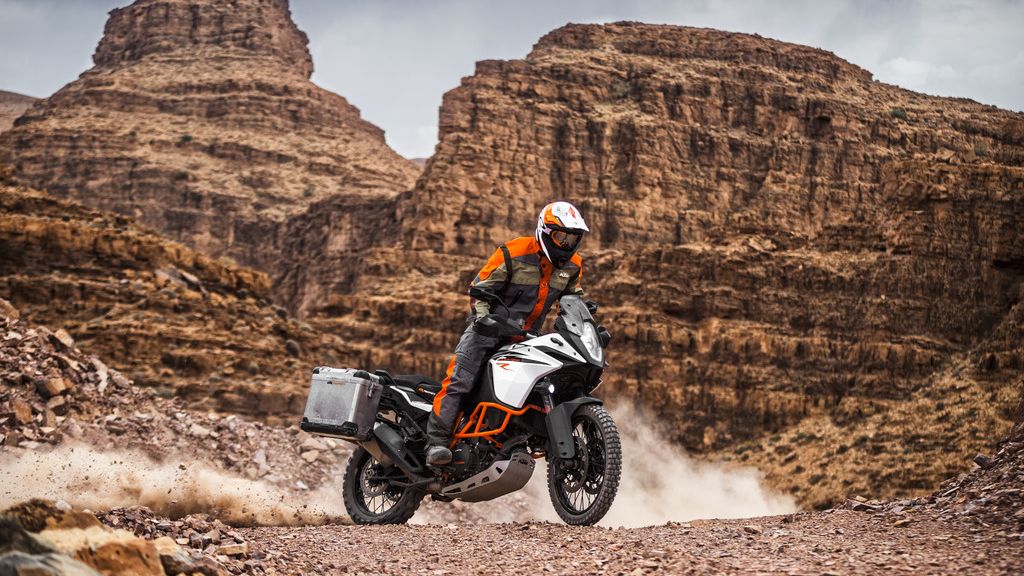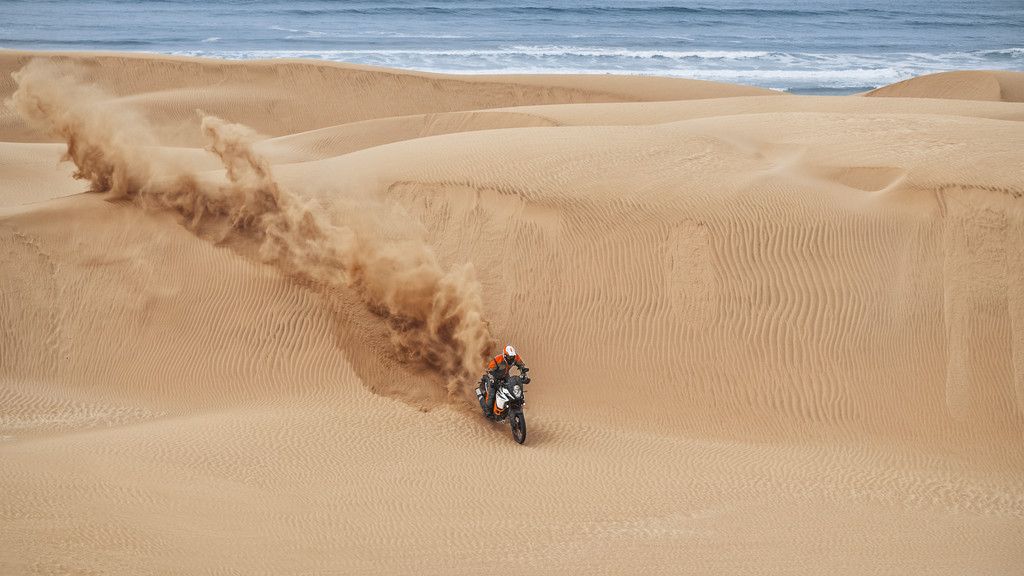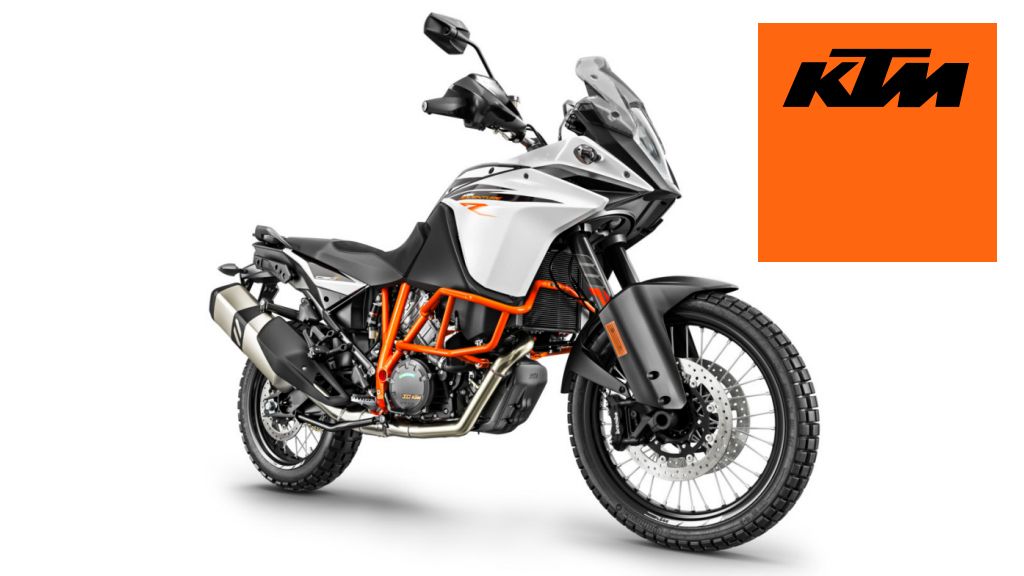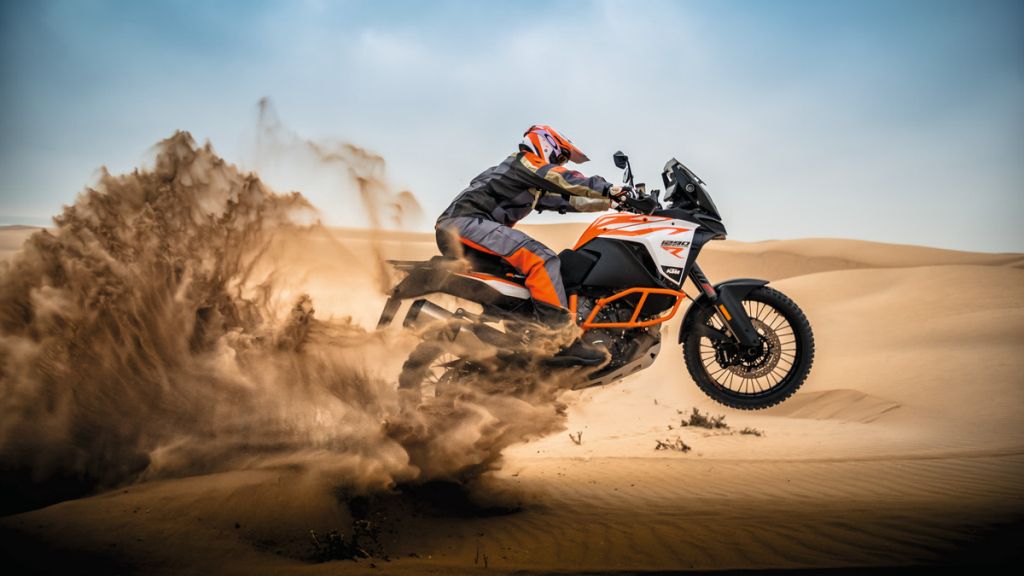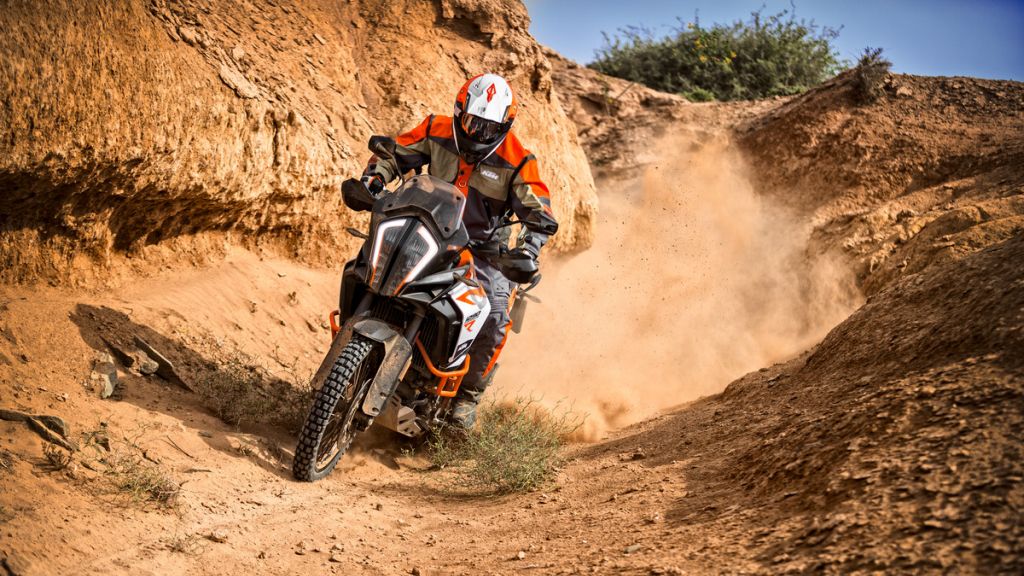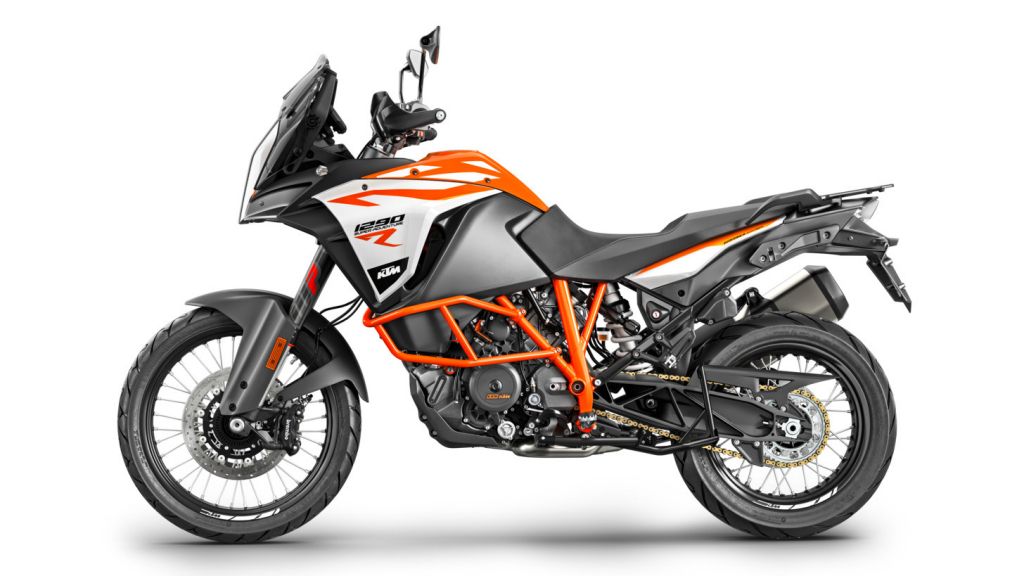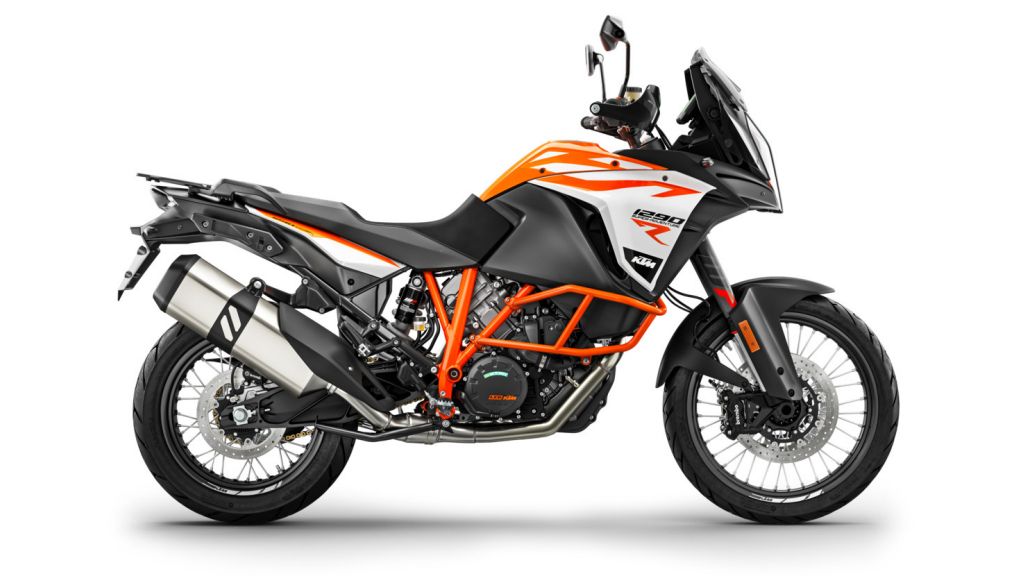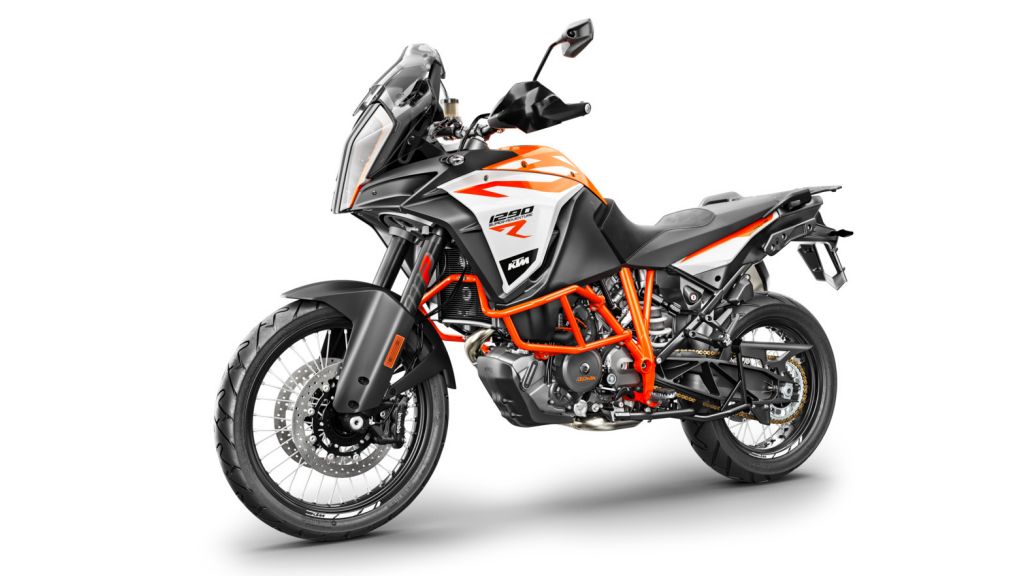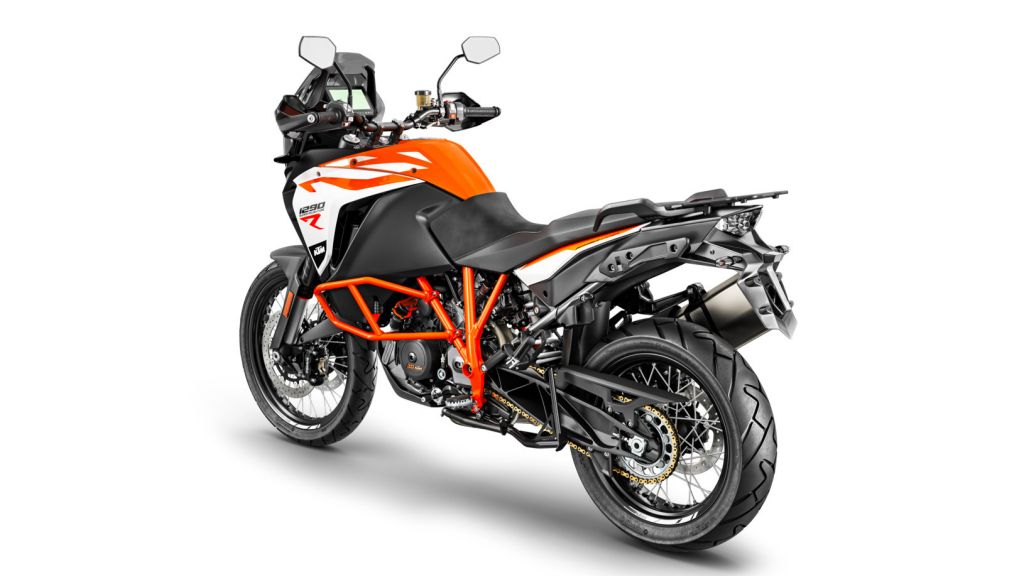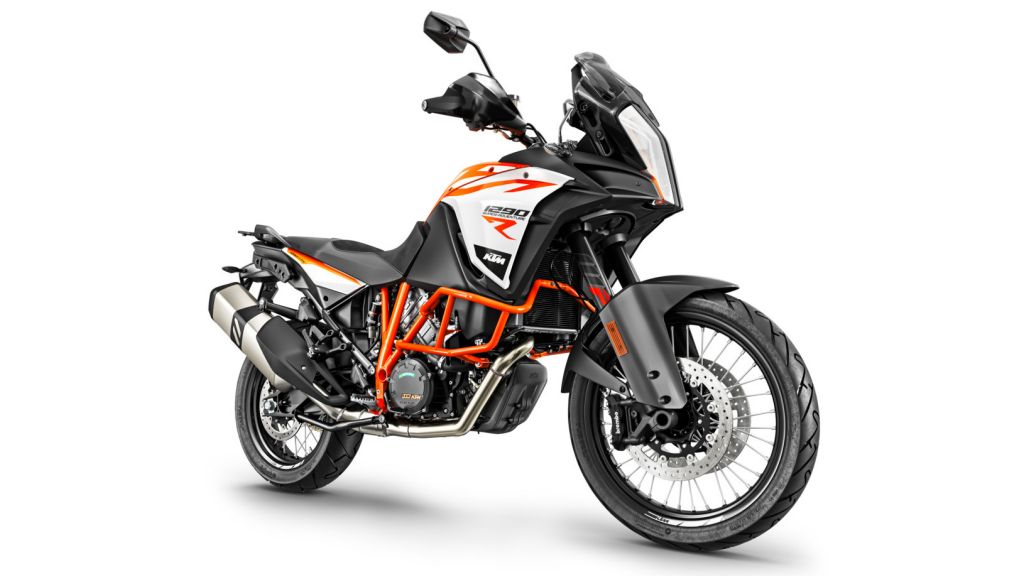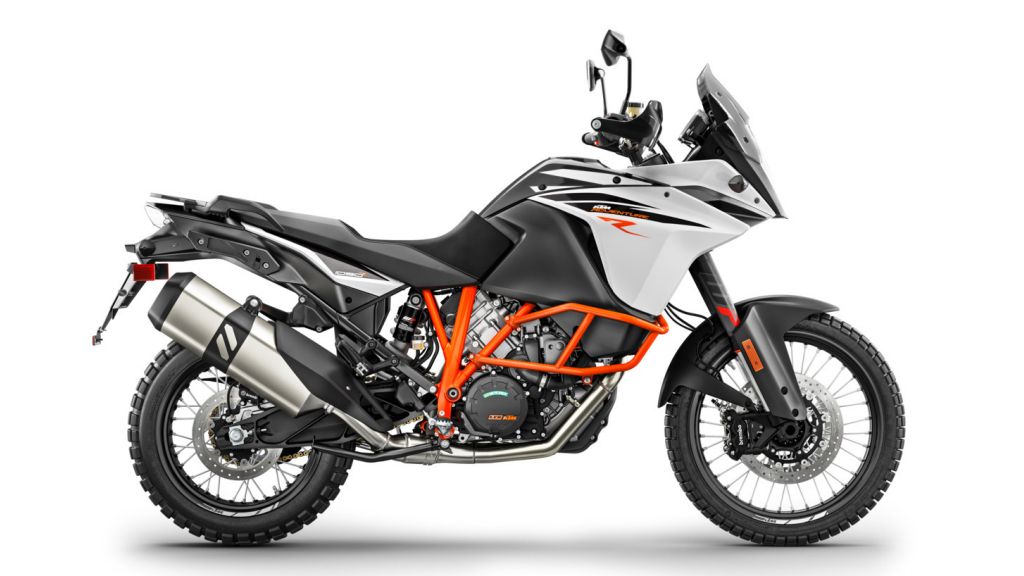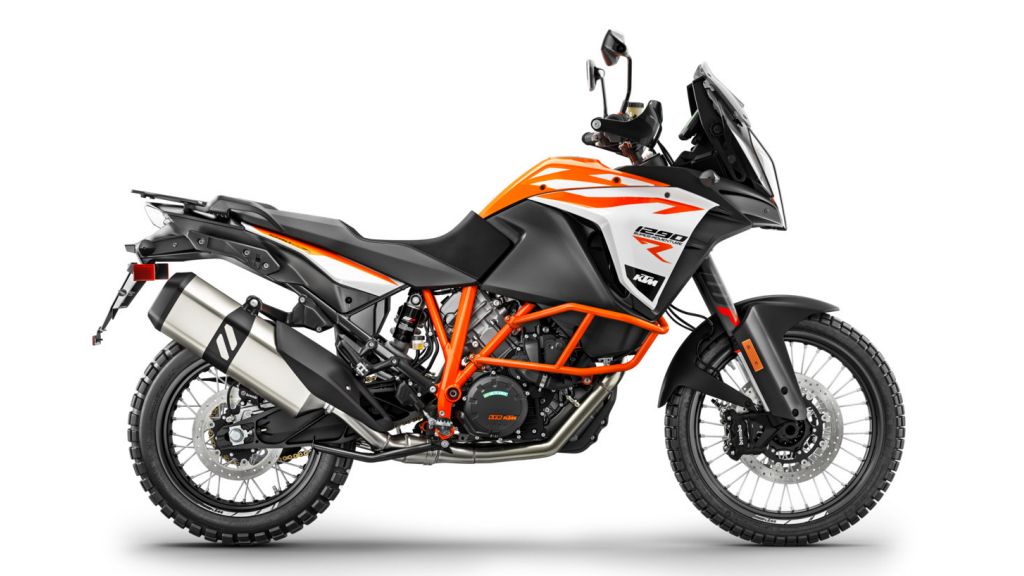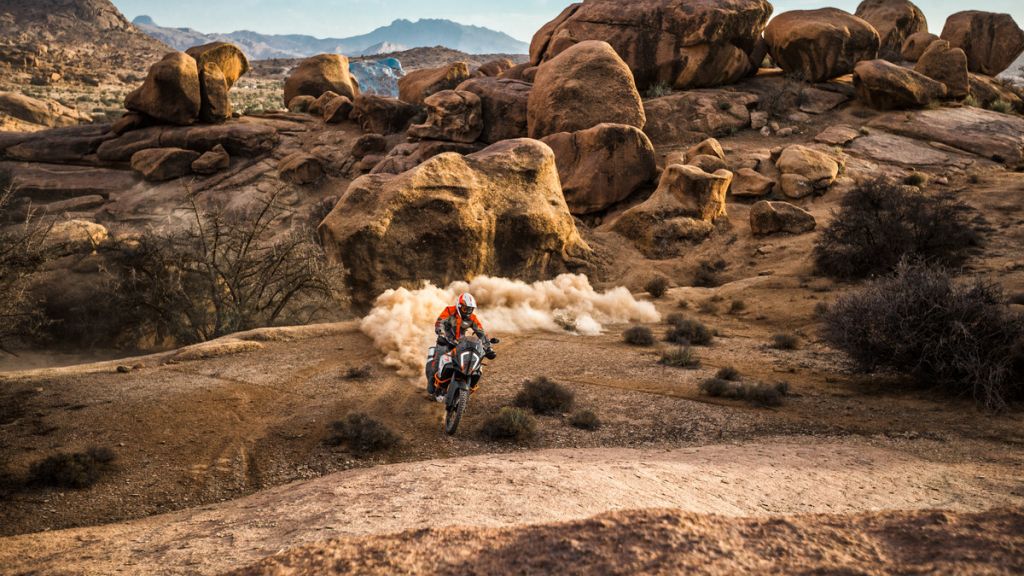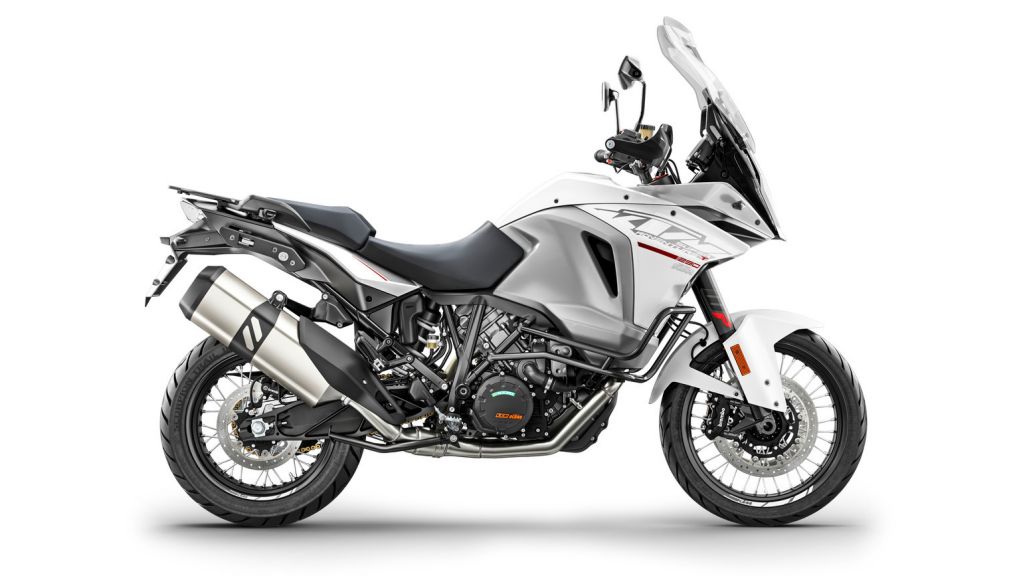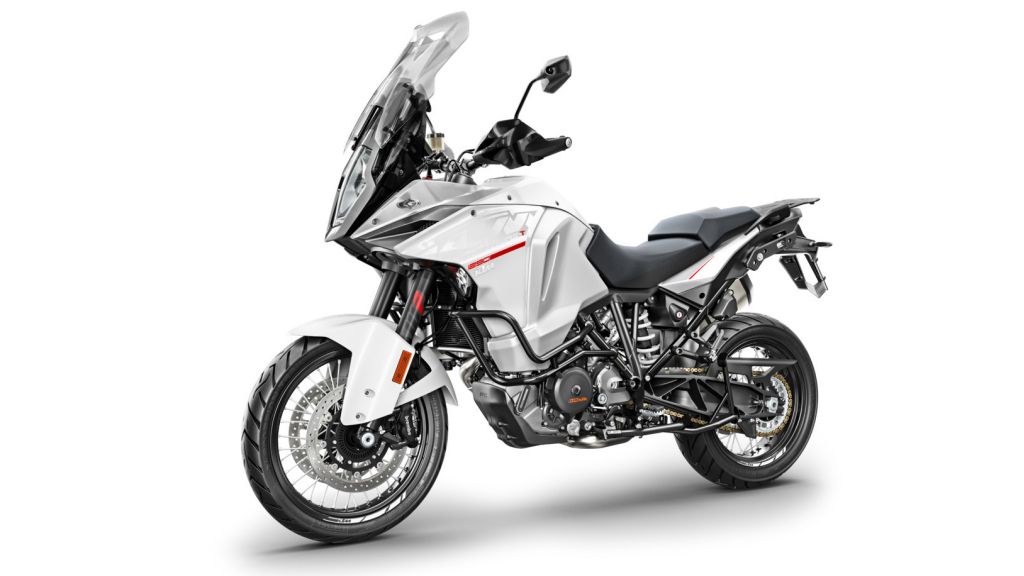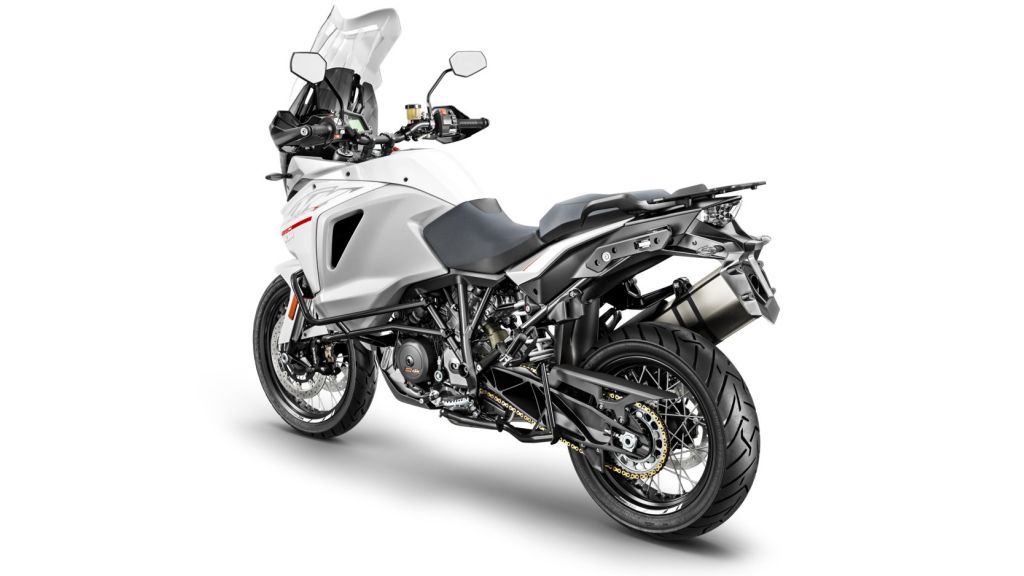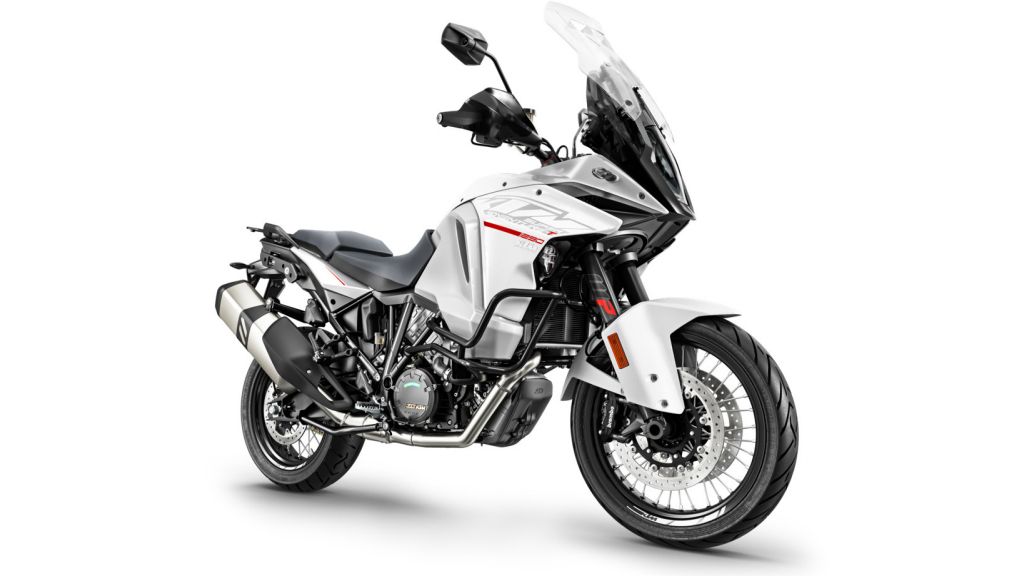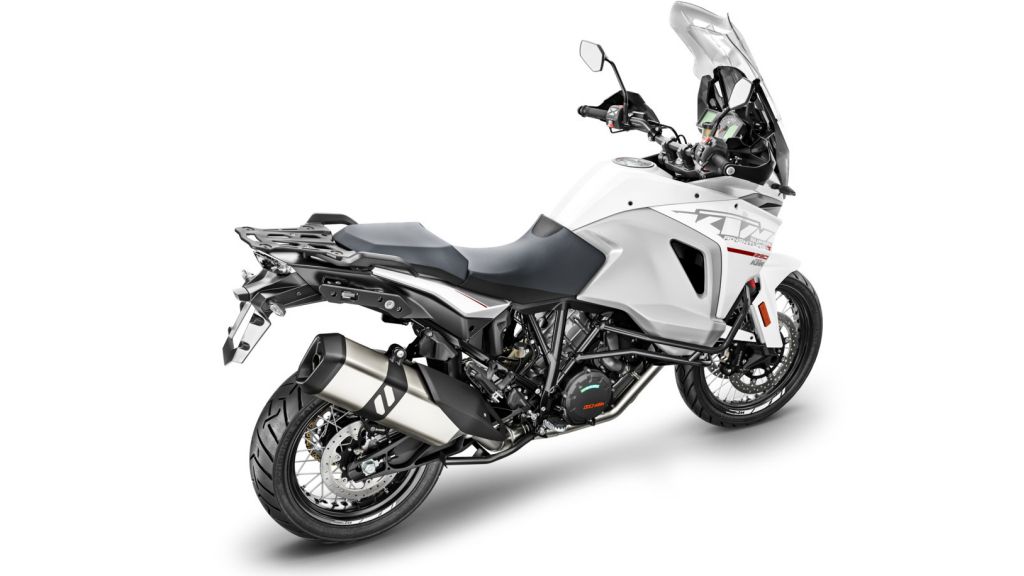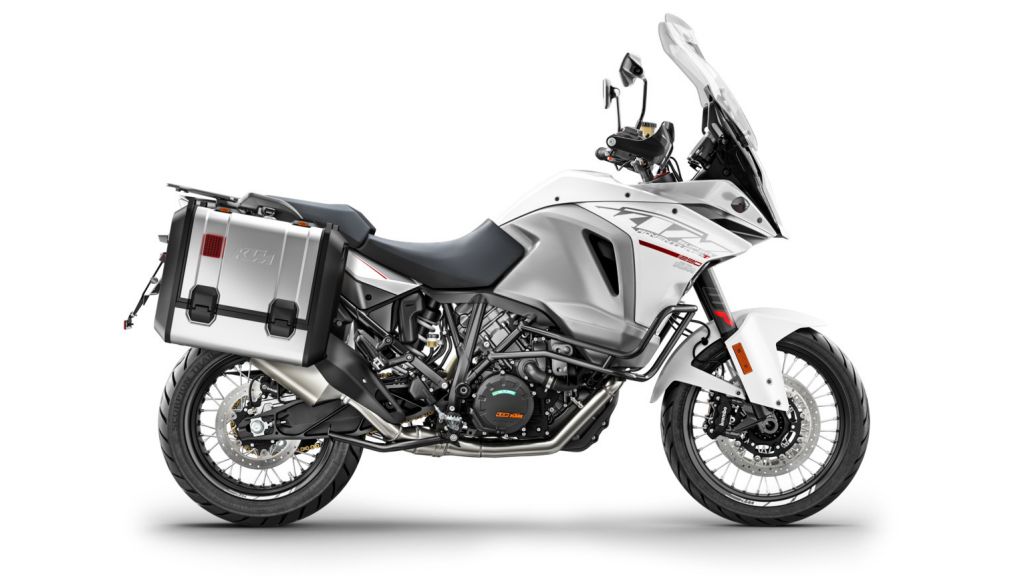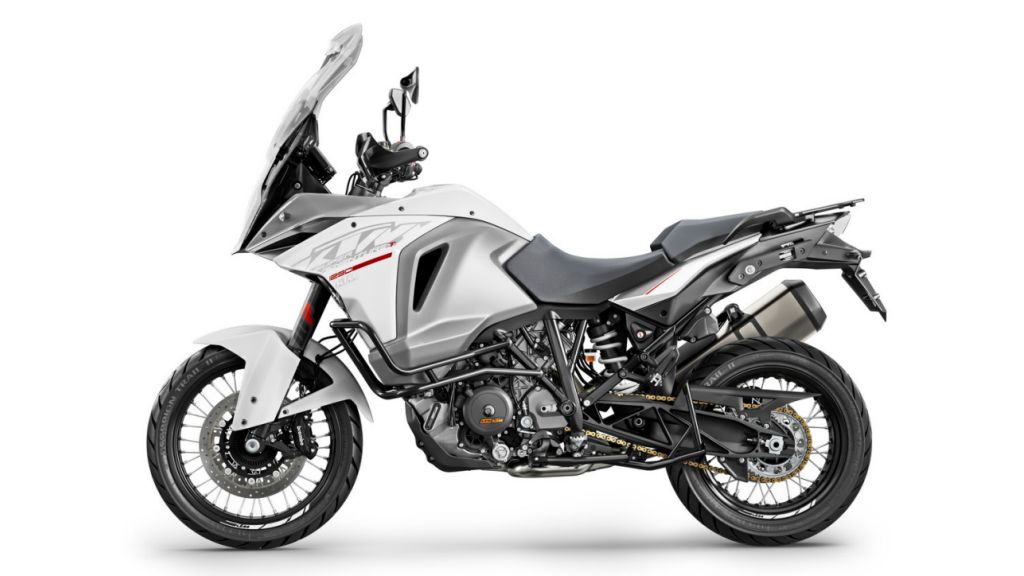KTM->ke1954 continues to expand and refine its adventure bike->ke5318 line with its 2017 1090 Adventure R and the 1290 duo, the Super Adventure R and Super Adventure T. Revealed to the world at the 2016 INTERMOT show in Cologne, Germany, these bikes benefit from KTM's not-inconsiderable experience with off-road bikes and its more recent foray into the world of naked->ke5317 street/superbikes->ke1888. The engines punch above their weight, and the electronic magic really shows the genius of Austrian engineering, which is a lot like German engineering. (...just with a sense of humor?).
Continue reading for my review of the KTM 1090 Adventure R, 1290 Super Adventure R and 1290 Super Adventure T.
2017 KTM 1090 Adventure R / 1290 Super Adventure R / 1290 Super Adventure T
- Make: Array
- Model: 2017 KTM 1090 Adventure R / 1290 Super Adventure R / 1290 Super Adventure T
- Engine/Motor: V-Twin
- [do not use] Vehicle Model: Array
Design
(1290 Super Adventure R)
Adventure bikes are a curious creature. They are an attempt to bring two wildly dissimilar riding styles together on a single platform, and good performance on one surface frequently comes to the detriment of the other. KTM attempts to strike a balance with this line that carries long-stroke suspension and plenty of ground clearance along with the ABS and traction control street riders expect nowadays. It is this combination of demands that drives the unusual features that have become standard for the genre.
The “R” models carry a wind/rock deflector atop a small front fairing, while the “T” gets a proper windshield for road-trip comfort. The upper lines carry an angular bent, if you'll forgive the pun, and they tumble down the tank to the saddle before rising once again at the tail. The exposed Trellis plays right into the utilitarian looks of the family, and I love how it protects the sides of the engine. Although KTM gives the “T” a tour-tastic windshield, like most manufacturers abroad they somehow still don't get it that Americans expect to see bags on our tour bikes->ke2669, and no, it doesn't count just having them available in the accessories catalog.
Chassis
(1090 Adventure R)
All three of these adventuresome models are built upon the same Trellis frame that comes made from chromium-molybdenum steel members for a light assembly that weighs in at only 21.6 pounds. A die-cast, open-lattice swingarm completes the skeleton. Steering geometry is likewise consistent across the board with 26-degrees of rake (64-degrees from the horizontal) for nimble handling characteristics, and the 1290 Super Adventurers come with a WP steering damper to combat kickback at the bars during aggressive maneuvers.
Fat, usd 48 mm forks buoy the range, but where the “R” models run fully adjustable WP forks, the street-tastic “T” takes it to the next level with a semi-active WP suspension system. The system uses a Suspension Control Unit with a choice of four separate modes that deliver variable damping rates so the rider can dial in for the prevailing road (or offroad->ke450) conditions and personal preference.
Brake components are also mostly the same with radial mount, four-pot, opposed-piston binders pinching dual 320 mm discs and a twin-pot rear caliper and 268 mm rear disc to slow the rear wheel. ABS is present across the board, but again with model-specific differences. The 1090 “R” runs with the Bosch 9M+ dual-channel ABS that can be set to offroad mode to allow for some slip, and can be turned off entirely for the freedom to spin the rear wheel as much as you like. On the 1290 “R” and “T” models, we have the Bosch 9ME that boasts the same offroad mode and “Off” mode, but adds angle-sensing cornering ABS to the mix for even more contact-patch protection.
KTM likes their laced wheels, and who can blame them? The two “R” models roll on a 21-incher up front and an 18 in back with Continental TKC hoops, all of which is entirely appropriate for offroad work in rugged terrain. The streetwise “T” model backs off that diameter just a little bit with a 19-inch rim up front and 17 in back, and Pirelli's Scorpion Trail II road rubbers. No matter which of the two bigger models you choose, the Tire Pressure Monitoring System stands overwatch on that critical metric and displays the value for easy monitoring by the rider.
Drivetrain
(1290 Super Adventure T)
At the bottom of the displacement range for the family we have the “1090” that runs in a 75-degree, V-twin configuration. Oversquare to the Nth degree, the 103 mm bore and 63 mm stroke adds up to a total displacement of 1,050 cc with 125 horsepower on tap. Equally oversquare, the big-brother 1290 models run a 108 mm bore and 71 mm stroke with 1,301 cc total. As expected, they also deliver a bit more power to the tune of 160 horsepower and 79.8 pound-feet of torque.
All three of these siblings use ride-by-wire to control the Keihin Engine Management System, and enjoy the benefits of a full-throated Motorcycle Traction Control System. The bigger mill gets a Motor Slip Regulator that modulates throttle position to control engine rpm when slippage is detected upon hard downshifts, and the slipper clutch that comes with both plants further adds to that safety net. Water-cooling and four-valve heads are also consistent across the board, as are the six-speed transmission and dual-spark heads.
Competitor
With the adventure bike genre more populated than ever before I had my work cut out to narrow it down, but in the end I settled on the CRF1000L Africa Twin from Honda->ke291.
Visually, these two adventurers fit the mold to a “T” with slightly different flavors here and there. Honda runs with a taller clear windshield while the KTM runs a lower-profile deflector instead. Gotta' say for the intended purpose, I like the angular KTM lines, and so to mine eyes the Africa Twin is definitely the lesser of the two, but bikes like this are built for a purpose and winning beauty contests ain't it. Besides, beauty is subjective.
Honda runs a semi-double cradle frame that is much less conspicuous than the partially exposed Trellis frame on the KTM, but I like the look of exposed Trellis frames and so KTM picks up a few vanity points there. Both carry their exhaust silencers at an upswept angle that keeps them well clear of the terrain for a bit of strike prevention and a look that's all business.
Off the floor, the 1090 Adventure “R” comes offroad ready with street-knobbies that are particularly well for soft surfaces while the Africa Twin hoops are more street-centric in design. Having said that, it's easy enough to change tires for whatever your chosen playground may be. No shortage of strength in the front ends here; Honda rides on usd Showa forks, but lack the adjustments of the usd WP struts favored by KTM. Brakes are likewise strong with four-bore opposed-piston binders up front on a pair of 300 mm+ discs, and while Honda offers ABS that allows for leaving the rear brakes out of the loop, it falls a bit short of the electronic wizardry KTM's brakes bring to the table.
Honda falls a tad short in displacement at 998 cc versus the 1,050 cc KTM, but that doesn't quite explain away the difference in horsepower. The parallel-twin mill in the Africa Twin manages 94 ponies, but KTM's plant cranks out a solid 125 ponies for a difference that will definitely register on the heinie-dyno. One thing Honda definitely has going for it here is its Dual-Clutch Transmission, an automatic shifting gearbox that provides a viable alternative to the old hand-clutch foot-shift method.
He Said
My husband and fellow motorcycle writer, TJ Hinton, says, “KTM never disappoints when it comes to power and technology. It's hard to believe that they once were strictly a dirtbike->ke295 manufacturer. The gadgets, gizmos and power output is all very impressive to say the least, but I wonder why they have not yet applied that technological mastery to designing a comfortable seat. That aside, I like these rides and the company as a whole, but it does have a reputation for poor support/customer service. Is it deserved? I am not 100-percent sure having never had that pleasure/pain myself.”
She Said
"If an 1190 Adventure and a 1290 Super Duke R got together and had offspring, you'd have a 1290 Super Adventure with that awesome 1,301 cc engine. A feature that I really like is the cornering lights activated by the lean angle sensor. Anyone who has taken a corner in the dark and been surprised by what's ahead once the headlight catches up with the turn can appreciate cornering lights."
Specifications
|
Engine Type: |
2-Cylinder, 4-Stroke, 75° V-Twin, DOHC |
|
Displacement: |
1090 Adventure R: 1050 cc, 1290 Super Adventure (R,T): 1301 cc |
|
Bore/Stroke: |
1090 Adventure R: 103/63 mm, 1290 Super Adventure (R,T): 109/71 mm |
|
Starter: |
Electric; 1090 Adventure R: 12V 8.6Ah, 1290 Super Adventure (R,T): 12V 11.2Ah |
|
Transmission: |
6 Gears |
|
Fuel System: |
Keihin EFI, 52 mm Throttle Bodies |
|
Lubrication: |
Pressure Lubrication, 3 Eaton Pumps |
|
Cooling: |
Liquid Cooling |
|
Clutch: |
PASC Slipper Clutch, Hydraulically Operated |
|
Ignition: |
Keihin EMS with Ride-By-Wire, Dual Ignition |
|
Frame: |
Chrome-moly Steel Trellis |
|
Subframe: |
Aluminum, Powder Coated |
|
Handlebar: |
Aluminum, Tapered, Ø 28/22 mm |
|
Front Suspension: |
WP USD Ø 48 mm |
|
Rear Suspension: |
WP PDS Monoshock |
|
Suspension Travel Front/Rear: |
220 mm/8.7 in; 220 mm/8.7 in |
|
Front/Rear Brakes: |
Disc Brake 320 mm/287 mm |
|
Front/Rear Wheels: |
2.50 x 21”, 4.50 x 18” |
|
Front/Rear Tires: |
90/90-21”; 150/70-18” |
|
Steering Head Angle: |
26º |
|
Wheelbase: |
1,580 mm ± 15 mm / 62.2 ± 0.6 in |
|
Ground Clearance: |
250 mm / 9.8 in |
|
Seat Height: |
890 mm / 35 in |
|
Tank Capacity: |
23 L / 6.1 gal |
|
Weight (without fuel), Approx: |
1090Adventure R: 214 kg/ 471.8 lbs, 1290 Super Adventure (R,T): 224 kg/ 493.8 lbs |

